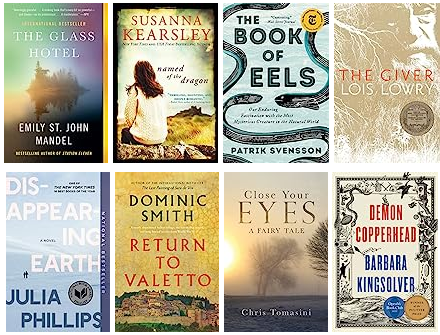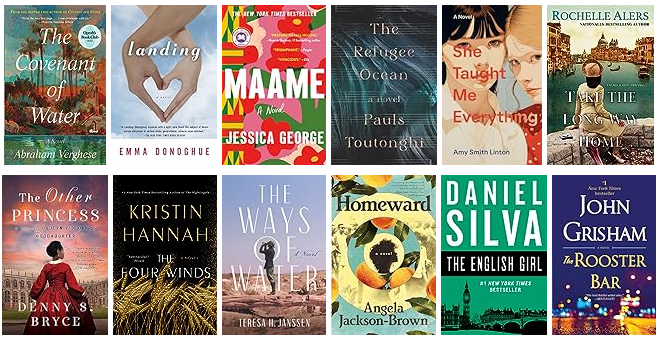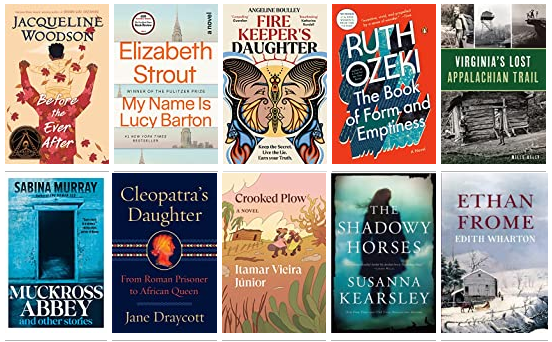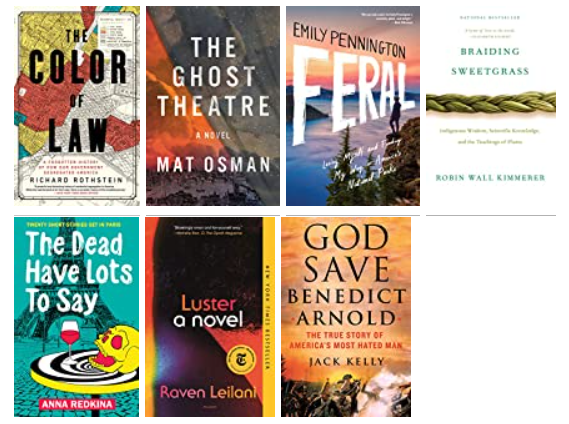My Quest to Read 100 Books in a Year: May and June, Months 5-6
Related posts: Check out our fiction reviews, non-fiction reviews, and book lists.
Note: Some links throughout our site are affiliate links, which means we may receive a small commission at no cost to you.
why I am reading 100 books this year?
After accomplishing this goal in 2021 but falling short in 2022, I decided to tackle it again! Read my full story of this year’s challenge in my post here.
where I stand six months in to reading 100 books
So far in 2023, I’ve read 46 books, putting me on track to hit the goal of 100 books this year.
books read in may and june on the journey to 100
Literary Fiction:
The Glass Hotel by Emily St. John Mandel - A girl named Vincent, raised in an isolated town, learns to mold herself into a more worldly version of herself through unexpected opportunities and encounters. Vincent eventually lands the once-in-a-lifetime role of faux-wife to a globe-trotting businessman whose existence is much more precarious than anyone realizes. Beneath it all is a unique, authentic person, who enjoys seeing the world through short video clips that she makes wherever she goes, creating her own type of art. Whether intentional or unintentional, Vincent lives her life as a pawn to others’ needs and whims and it remains to be seen whether she can thrive on her own. I really enjoyed this novel with unexpected turns, interesting characters, and the stories of lives destroyed by greed.
Demon Copperhead by Barbara Kingsolver - This modern re-telling of David Copperfield is set in the heart of Appalachia. This novel tackles so many big issues, no short summary can do it justice! Demon’s dysfunctional family bleeds into a struggle to thrive on the verge of adulthood in a world that has been left behind, ignored, and dumped on by industry. I listened to this one on audiobook, and it was very well narrated.
Close Your Eyes: A Fairy Tale by Chris Tomasini - This novel creates a compelling tale of love, hope, and purpose against the backdrop of a dysfunctional kingdom and a haunted king. Check out our in-depth review of this novel here.
Disappearing Earth by Julia Phillips - In rural Russia, two sisters are abducted from a small community. Their absence and the mystery of what happened touches many in the community in different ways. This novel follows various sub-stories of the other members of the community and opens the readers’ eyes to struggles of the indigenous population, missing girls, and the impact of loss.
Caleb’s Crossing by Geraldine Brooks - Set in the mid 1600s, teenager Bethia is part of the Puritan community in New England. She is challenged by the limitations placed upon her by society and secretly befriends a Native American, who joins their community. Brooks’ novel follows the nugget of the true story of the first Native American to attend Harvard. For readers who enjoy the early American experience, this is a nice addition to that genre; it brings to life the complex interactions between the early European settlers and the local populations.
Return to Valetto by Dominic Smith - This novel is set in a crumbling Italian town, home to ten residents. The main character returns to this town, where his aunts and grandmother reside, in search of peace and quiet for six months for academic work and instead finds himself enmeshed in a legal challenge to his property and unexpected family history that lingers from World War II. Read our full review of this novel here.
Chorus of Mushrooms by Hiromi Goto - This novel is set in Canada and explores the lives of three generations of Japanese Canadian women as they find how to be both part of and different from the main culture. I came across this 1994 novel by happenstance and found it to be a very interesting read with a unique voice.
Dystopian Fiction:
The Giver by Lois Lowry - This young adult dystopian novel came out when I was a kid and while I was familiar with it, I had never read it myself. So, when I saw it was available on audiobook through my local library, I figured there’s no time like the present. Having read plenty of really amazing dystopian fiction (one such recent read was Rumaan Alam’s Leave the World Behind), it was hard to assess this novel given its intended audience. I think this would be a good entry point to dystopian fiction for a young adult reader but feels lackluster to me when compared with this broader genre. The largest majority of the book’s pages are simply setting the scenes for what becomes a fast-moving and highly predictable end. This is a short read and not unenjoyable, just not one that wowed me.
Historic Fiction:
Named of the Dragon by Susanna Kearsley - This was my 6th read by Kearsley in a short period of time, thanks to the accessibility of her novels as e-books at my local library. I reviewed the other five in last month’s installment of this post (read it here). This novel follows literary agent Lyn to Wales with one of her authors during the Christmas season. A couple of other intriguing and somewhat elusive writers live in the town as does a new mother who becomes convinced that Lyn, still reeling from the loss of her own child, is the only one who can protect her baby against ancient magic.
Non-fiction
The Book of Eels: Our Enduring Fascination with the Most Mysterious Creature in the Natural World by Patrik Svensson - The Swedish author spent his childhood fishing for eels with his father, a road worker who would ultimately become sick with cancer that was directly traced to the work he did. While Svensson’s father enjoyed eating eels in any way they could be cooked - fried, boiled, and more - the author did not. He found the taste and texture to be off-putting. He did, however, become fascinated by what is known - and more importantly, unknown - about these unique creatures. This work of non-fiction is part study of the eel and part a memoir and ode to those halcyon days of the author’s childhood with his father. I picked this book up on a whim when we were staying in a VRBO in West Virginia this month. I had forgotten my kindle (oops!) and didn’t get excited about reading on the tiny iPhone screen kindle app. This book sat perched on a bookshelf and piqued my interest when I realized how I knew basically nothing about eels. Svensson tells an interesting history human interest in the eels that traces back as far as to Aristotle and to more recent naturalists like Rachel Carson.
Darwin and the Art of Botany: Observations on the Curious World of Plants by James Costa and Bobbi Angell - I had a chance to read this as an Advanced Reading Copy. On the surface, this work would make for a beautiful, informative coffee table book. The authors took original drawings/sketches of plants by Charles Darwin and expounded upon the plants in both his words and their own. Its a nice ode to the beauty and science of botany.
Sea, Salt & Sweat: A Story of Nova Scotia and the Vast Atlantic Fisheries by Nova Scotia Communications and Information Center - This was definitely a random read! While we were staying in New Brunswick along the Bay of Fundy, the home we stayed in had this short book on hand. It was originally produced by the local government and had a lot of great local information about the fishing and boating industry, going back to its early roots and to the modern day. As someone who enjoys local history when traveling, this scratched that itch.
Click below to save this post to Pinterest!
Check out some of our other Book Lists:




















